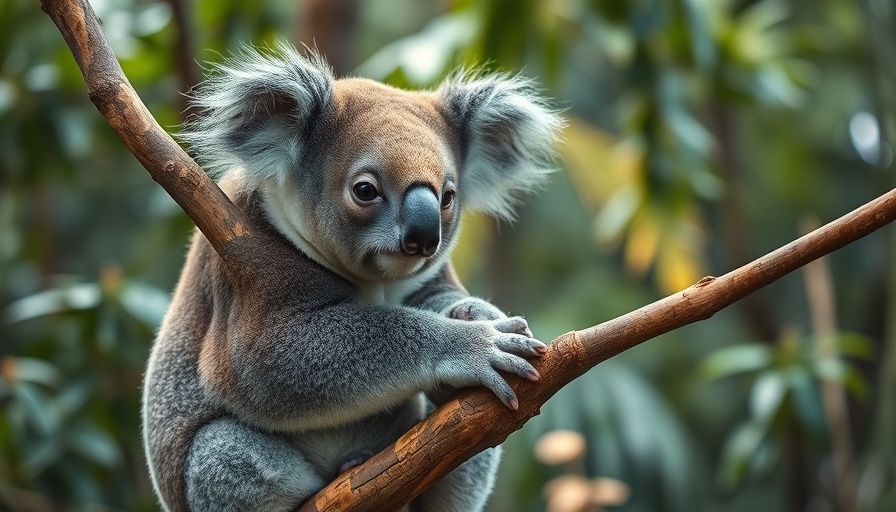
Koalas in Crisis: The Chlamydia Epidemic
Koalas are facing a dire health crisis in Australia, with alarming rates of chlamydia infections that have left many wondering about the future of this iconic marsupial. Recent studies indicate that chlamydia prevalence can soar up to 88% in certain populations, particularly in South Australia and southeast Queensland, raising concerns about the species' survival.
The Origins of Infection: How Do Koalas Get Chlamydia?
While koalas are not born with chlamydia, young joeys can acquire the infection through maternal transmission. This occurs when the joey interacts with the mother’s bodily fluids or when they consume the nutritious “pap” excreted by their mothers. In addition to maternal transmission, adult koalas contract chlamydia through sexual contact and from contaminated environments like soil and water sources.
Stress and Its Role in the Spread
Underlying health issues exacerbate the spread of chlamydia among koalas. Overcrowding, limited food resources, habitat destruction from climate change, and extreme weather conditions weaken their immune systems, making them more susceptible to infection. Chronic stress can lead to long-term immune suppression, further fueling this crisis.
The Broader Impact on Koala Populations
Chlamydia represents a significant threat to koala populations, leading to severe health complications such as infertility and blindness. Current treatments, such as antibiotics, pose their own risks by disrupting the koala's gut microbiome, which is essential for their unique diet of eucalyptus leaves. These compounded issues highlight an urgent call for comprehensive strategies to revive koala health.
A Glimmer of Hope: Possible Solutions Ahead
To combat the chlamydia epidemic, conservationists are exploring various measures, including developing effective vaccines and implementing habitat restoration projects. Maintaining healthy genetic diversity is critical, as evidenced by isolated koala populations in New South Wales that remain free of chlamydia, yet suffer from inbreeding challenges. Balancing genetic diversity while mitigating disease risk remains a complex challenge.
As we continue to grapple with these issues, the fate of koalas hangs in the balance. It is crucial for communities to engage in environmental conservation efforts and advocate for the health of these treasured animals.
 Add Row
Add Row  Add
Add 



 Add Row
Add Row  Add
Add 

Write A Comment